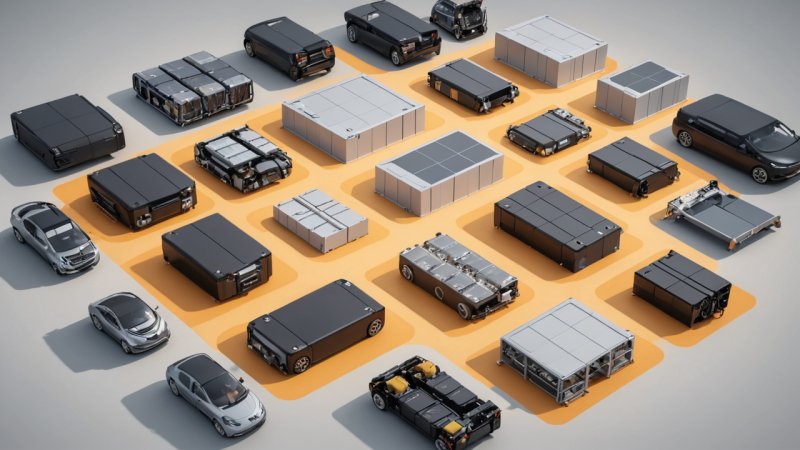As the automotive world shifts toward more sustainable solutions, electric vehicles (EVs) have taken center stage, ushering in a new era of transportation. At the heart of every electric vehicle lies a complex yet fascinating piece of technology: the battery. Understanding how these batteries work not only enhances your appreciation of EVs but also informs you about their capabilities, limitations, and the future of automotive innovation. In this article, we’ll delve into the core components of electric vehicle batteries, explore their various types, and examine how they impact performance and sustainability.
The Basics of Electric Vehicle Batteries
Electric vehicle batteries are primarily responsible for storing energy that powers the vehicle’s electric motor. Unlike traditional internal combustion engines that rely on gasoline or diesel, EVs use electricity stored in batteries to generate motion. The most common type of battery used in electric vehicles is the lithium-ion battery, known for its high energy density, long life cycle, and relatively low weight.
Components of an EV Battery
Understanding the makeup of an electric vehicle battery can help demystify how it functions. An EV battery typically consists of several key components:
- Cells: The basic building blocks of any battery, cells convert chemical energy into electrical energy. In lithium-ion batteries, these cells are made from materials like lithium, cobalt, nickel, and graphite.
- Modules: A group of cells is combined to form a module, which is then connected with other modules to create the entire battery pack.
- Battery Management System (BMS): This electronic system monitors the battery’s performance, ensuring optimal charging and discharging while maintaining safety.
- Thermal Management System: To prevent overheating and maintain efficiency, a thermal management system regulates the temperature of the battery, often using liquid cooling or air cooling techniques.
Types of Electric Vehicle Batteries
While lithium-ion batteries dominate the market, several other types of batteries are emerging in the EV landscape:
Lithium-Ion Batteries
These batteries are widely used in most electric vehicles due to their efficiency and energy density. They come in various chemistries, including:
- LFP (Lithium Iron Phosphate): Known for safety and longevity, LFP batteries are less energy-dense but can last longer, making them ideal for certain applications.
- NMC (Nickel Manganese Cobalt): Offering a balance between energy density and thermal stability, NMC batteries provide high performance for many mainstream EVs.
- NCA (Nickel Cobalt Aluminum): These batteries are used mainly in high-performance electric vehicles, such as those produced by Tesla, due to their exceptional energy density.
Solid-State Batteries
Solid-state batteries are a promising technology that replaces the liquid electrolyte found in traditional lithium-ion batteries with a solid electrolyte. This advancement can lead to increased energy density, improved safety, and faster charging times. While still in the development phase, solid-state batteries could revolutionize the industry if commercialized effectively.
Other Emerging Technologies
Research is ongoing into several other battery technologies that could become viable alternatives in the future:
- Sodium-Ion Batteries: These batteries use sodium instead of lithium, offering a more abundant and potentially cheaper material, though they currently have lower energy density.
- Flow Batteries: A different approach, flow batteries store energy in liquid electrolytes and can be scaled up for larger applications, making them suitable for commercial use.
Impact on Performance and Sustainability
The type of battery used in an EV directly influences its performance, range, and sustainability. For instance, higher energy density batteries can provide longer ranges, allowing for extended travel without frequent charging. Additionally, advancements in battery recycling processes are crucial for minimizing the environmental impact of EV batteries. Manufacturers are increasingly focusing on creating batteries that are easier to recycle, reducing waste and conserving resources.
Charging Infrastructure and Technology
The usability of electric vehicles hinges on the availability of charging infrastructure. Understanding the various charging options can help you make informed decisions about owning an EV. Here are the main types of charging:
- Level 1 Charging: This is the most basic form of charging, using a standard 120V outlet. While convenient, it offers the slowest charging speed.
- Level 2 Charging: Utilizing a 240V outlet, this option significantly reduces charging time and is commonly found in public charging stations.
- DC Fast Charging: Ideal for long road trips, DC fast chargers can charge a vehicle up to 80% in about 30 minutes. However, they can only be used with compatible EVs.
Conclusion
As electric vehicles continue to gain popularity, understanding the technology behind their batteries becomes increasingly important. From the intricacies of battery composition to the various types available, each aspect plays a crucial role in shaping the future of transportation. As we move toward a more sustainable future, advancements in battery technology promise to enhance performance, extend range, and reduce environmental impact. By keeping informed about these developments, you are better equipped to appreciate the innovations in electric vehicles and make educated choices for your driving experience.






